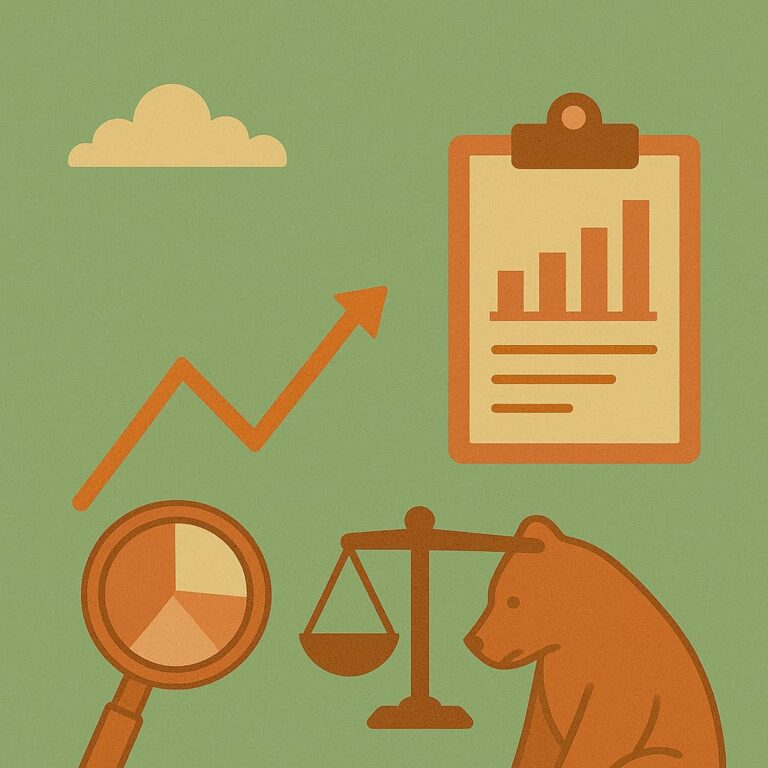If you’ve ever watched or read market news, you’ve probably heard terms like “bull market” and “bear market.” These animal metaphors are more than catchy headlines—they describe the overall mood and direction of financial markets.
Understanding the difference between bull and bear markets is essential for any investor, whether you’re trading stocks, buying crypto, or planning for retirement.
In this post, we’ll break down:
What bull and bear markets are
What causes them
How investors typically behave in each
Tips on how to invest smartly in both environments
What Is a Bull Market?
A bull market refers to a sustained period of rising asset prices, usually accompanied by strong investor confidence, a growing economy, and low unemployment.
Key Characteristics of a Bull Market:
Stock prices increase consistently
Strong corporate earnings
Low interest rates
Rising GDP
Optimistic investor sentiment
Historical Example:
The U.S. experienced one of the longest bull markets in history from March 2009 to February 2020, following the 2008 financial crisis. During this time, the S&P 500 surged more than 400%.
What Is a Bear Market?
A bear market occurs when asset prices fall 20% or more from recent highs, often due to economic downturns, uncertainty, or negative investor sentiment.
Key Characteristics of a Bear Market:
Declining stock prices
High volatility
Weak or negative corporate earnings
Rising unemployment
Pessimistic outlook
Historical Example:
In March 2020, the S&P 500 dropped more than 30% in just a few weeks due to fears surrounding COVID-19. This was a classic bear market triggered by a global crisis.
Why Are They Called “Bull” and “Bear”?
The origin of these terms is rooted in the way these animals attack:
A bull charges upward, symbolizing rising markets.
A bear swipes downward, representing falling markets.
These analogies have become standard in describing market trends and investor behavior.
Key Differences Between Bull and Bear Markets
| Feature | Bull Market | Bear Market |
|---|---|---|
| Price Direction | Upward | Downward |
| Investor Mood | Optimistic | Fearful |
| Economy | Expanding | Contracting or slowing |
| Unemployment | Low | Rising |
| Investment Strategy | Aggressive buying | Defensive or cautious |
| Common Sectors | Tech, growth stocks | Utilities, consumer staples (defensives) |
What Causes Bull and Bear Markets?
Causes of a Bull Market:
Economic recovery or expansion
Low interest rates and easy monetary policy
Increased consumer and business spending
Strong job market
High corporate earnings
Positive investor sentiment
Causes of a Bear Market:
Recession or economic contraction
High inflation or deflation
Geopolitical instability (wars, pandemics)
Rising interest rates
Poor earnings reports
Investor panic and sell-offs
How Investors Behave in Each Market
In a Bull Market:
Investors are more risk-tolerant.
They tend to buy and hold assets, expecting prices to keep rising.
More money flows into growth stocks, crypto, and high-risk investments.
In a Bear Market:
Investors become risk-averse.
Many move money into cash, bonds, or defensive stocks.
Panic selling can lead to rapid declines.
Some use short-selling or hedging strategies to profit from falling prices.
Tips for Investing in a Bull Market
Ride the trend, but stay diversified.
Avoid putting all your money into one hot sector.Don’t chase the hype.
Just because prices are rising doesn’t mean every stock is a good buy.Take profits strategically.
Lock in gains periodically, especially after big rallies.Have an exit strategy.
Know when you’ll trim positions or rebalance your portfolio.Continue learning.
Bull markets are great times to study and refine your investing skills.
Tips for Investing in a Bear Market
Don’t panic sell.
Selling at a loss locks in your losses—markets usually recover over time.Stick to your long-term plan.
If you’re investing for 5–10+ years, bear markets are often temporary dips.Buy quality at a discount.
Blue-chip stocks and solid businesses often trade at lower prices.Focus on defensive sectors.
Consumer staples, utilities, and healthcare often perform better in downturns.Dollar-cost averaging (DCA).
Invest regularly regardless of market conditions to lower average entry cost.
How Long Do Bull and Bear Markets Last?
While there’s no set duration, history offers some insight:
Bull markets tend to last much longer—averaging 5–7 years.
Bear markets are usually shorter, lasting 6 months to 2 years.
| Market Type | Average Duration | Average Return |
|---|---|---|
| Bull Market | ~6 years | +200% or more |
| Bear Market | ~1 year | -30% to -50% |
Can You Predict Market Changes?
While analysts use data, charts, and economic indicators to forecast trends, no one can predict market turns with certainty.
That’s why the best approach is to:
Stay informed
Build a diversified portfolio
Invest consistently
Avoid emotional decisions
Final Thoughts: Embrace the Cycle
Bull and bear markets are both natural parts of the economic cycle. Instead of fearing downturns or chasing bubbles, smart investors prepare for both.
In bull markets, maximize gains through smart investing and patience.
In bear markets, focus on protecting your capital and seeking long-term opportunities.
Remember: Markets recover. Every bear market in history has eventually led to a new bull market.





